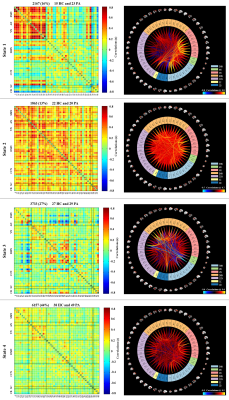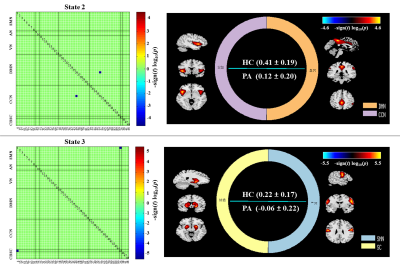Jia Yan Shi1, Zhong Shuai Zhang2, and Hua Jun Chen1
1Department of Radiology, Fujian Medical University Union Hospital, Fuzhou, China, 2SIEMENS Healthcare, Shanghai, China
1Department of Radiology, Fujian Medical University Union Hospital, Fuzhou, China, 2SIEMENS Healthcare, Shanghai, China
Aberrant dynamic FNC is a fundamental feature of brain dysfunction in cirrhotic patients without OHE, which is associated with neurocognitive decline. Dynamic FNC analysis may be a promising avenue in generating new insights into cirrhosis-related neuropathological processes.

Figure 2. Left column indicates the FNC matrices of States 1-4, with the number of windowed FNCs in every state, the corresponding percentage, as well as the number of participants from every group who entered into the state. Right column represents the visualization of functional network connectivity in each state. The functionalconnectivity matrix was screened using a threshold of 0.1 to display all independent components of functional networks. HC, healthy control; PA, cirrhotic patient.

